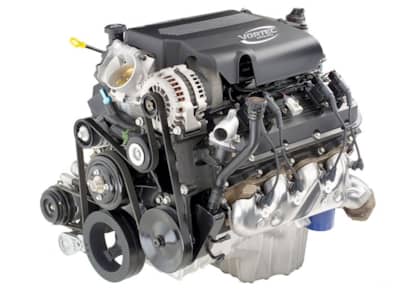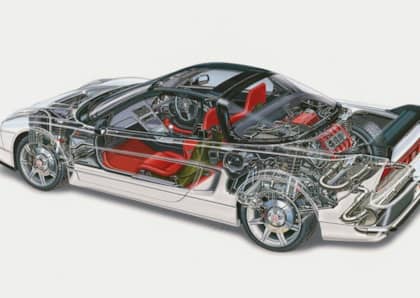EcoBoosted: Adding 96 HP to Ford’s 2.3L Ford Mustang
Back in March, we showed you just how easy it is to add 80 hp to the 2.7L EcoBoost found in the F-150 using nothing more than sound aftermarket tuning. Then, we did the same thing in April by unlocking an extra 60 hp hidden in the 3.5L EcoBoost. This time, we’re shifting gears, shaving off two cylinders and focusing our attention on the 2.3L EcoBoost platform available in ’15 and newer Mustangs. Once again partnering with Gearhead Automotive Performance in Bryan, Texas, its tuning prowess would be employed—along with a freer flowing downpipe and cold air intake—to extract 50 more ponies out of the 138 cubic inch EcoBoost.
Believing that even more power might be on the table if intake air temperature could be reduced, we reached out to Mishimoto for one of its performance intercoolers. Once installed, we logged a 37-percent reduction in air intake temperature and the Mustang responded by turning out another 40 hp. With the intercooler onboard, not only does the car make more power across the rpm range, but it can sustain that power longer. Read on for the intercooler install, along with the car’s mods list and the before and after dyno results. The simple, bolt-on and plug-and-play modifications performed in this article effectively transformed a mild, 14-second Mustang into a very respectable 12-second car.
Warning: after processing the following information you may be tempted to trade in your GT…
The Test Mule
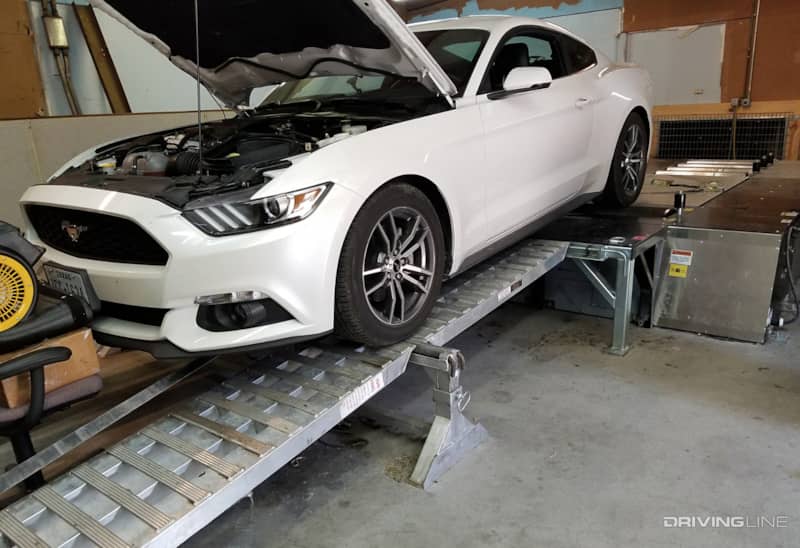
Using a 6,000-mile, ’17 model year EcoBoost Mustang as our test mule, all dyno testing took place at Gearhead Automotive Performance—and on the same 90-degree day. The testing was performed aboard the company’s in-house Dynocom 15000 chassis dyno and with the Mustang’s automatic transmission locked in fourth gear. All tests were also performed on the same tank of gas, which had both 93 octane and e85 present (a ratio that lead to an e30 mixture).
The Gatekeeper
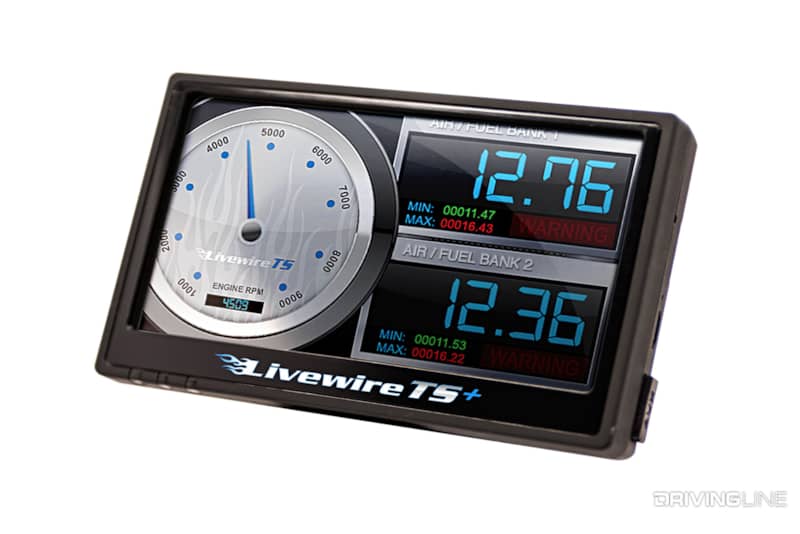
The job of communicating with the ECU and uploading Gearhead’s custom calibrations was left in the hands of a Livewire TS device from SCT. In our particular ’17 test mule, the programmer also served as a means of monitoring key powertrain vitals thanks to its 4-inch touch screen. The Livewire TS holds up to 10 custom tuning files at a time, features a built-in data log function and can read and clear diagnostic trouble codes.
Tuner, Air Intake, Downpipe
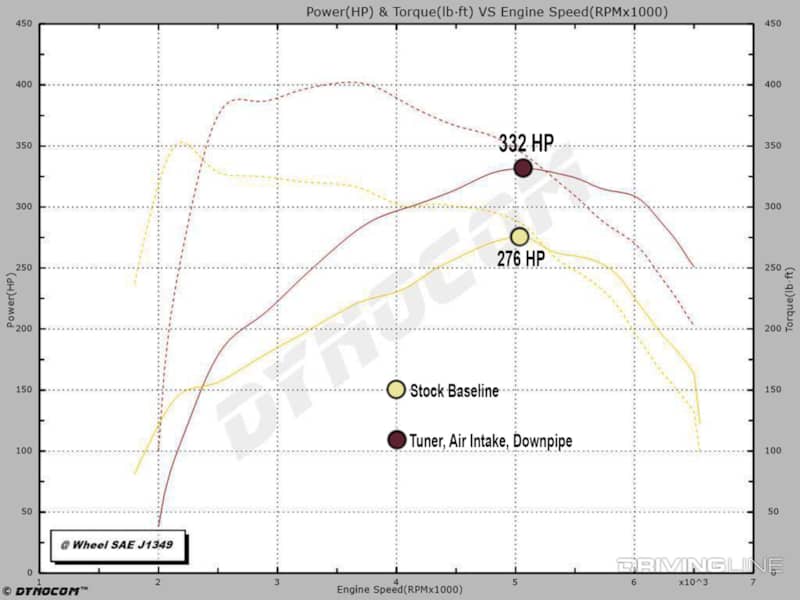
In this dyno graph, you can see the 56 hp gain that was realized with Gearhead’s aftermarket calibrating. In bone stock trim, the Mustang cleared 276 hp and 353 lb-ft of torque (yellow). During these dyno pulls, boost checked in at a mild 17 psi and air intake temp peaked at 145 degrees. With a Ford Racing cold air intake, MBRP downpipe and Gearhead’s custom tune onboard, peak power jumped to 332 hp and 402 lb-ft of torque (red). Peak boost registered between 22 to 23 psi, but air intake temps also increased (up to 175 degrees). With air intake temp rising, the Gearhead calibration leverages the factory safeguards and pulls back the boost and timing, which de-rates the engine in order to avoid detonation. While the 56 hp gained by adding the cold air intake, downpipe and the custom tune was impressive, it was clear at this point that a better performing intercooler was needed.
Peak Boost (Tuned): 22-23 psi
Peak Boost (Stock): 17 psi
Boost Drop (Tuned): 3.5 psi
Peak Air Intake Temp (Tuned): 175 degrees
Peak Air Intake Temp (Stock): 145 degrees
Mishimoto Stealth Black Intercooler
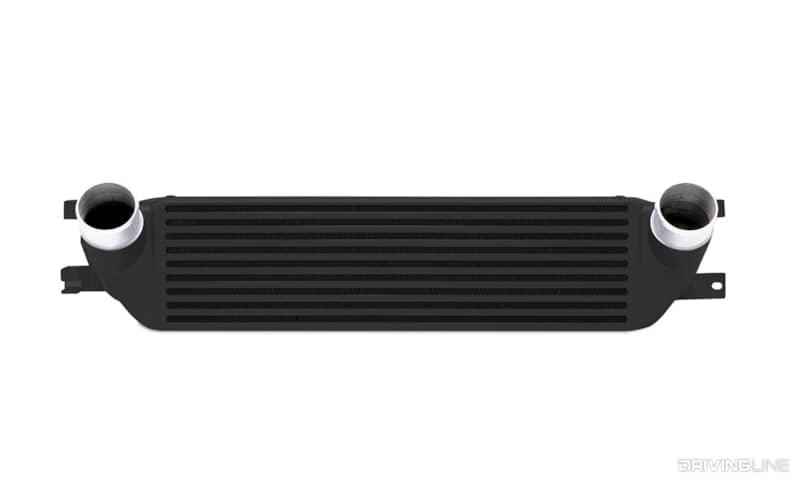
As with all Mishimoto intercoolers, the version for the 2.3L EcoBoost is all-aluminum, with precision TIG-welds throughout. A bar and plate core construction provides for less boost drop between the turbo and engine when compared to a traditional tube and fin design (i.e. boost travels through the intercooler with less restriction). The Mishimoto performance intercooler is available in either Sleek Silver or a Stealth Black finish (as shown above).
Intake Air Diverter Feature
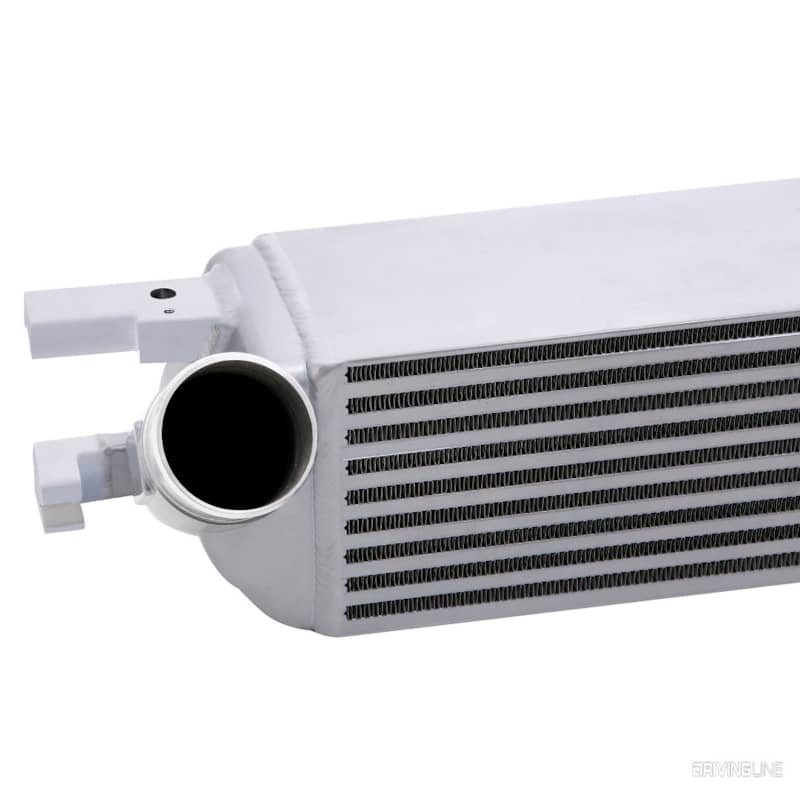
Here you can see the cast end tanks welded to the aluminum core on a Sleek Silver version of the Mishimoto performance intercooler. A well-engineered feature of the Mishimoto unit is that, within the hot side end tank, an intake air diverter is present. The intake air diverter evenly distributes air throughout the entire core for optimum cooling.
Under Tray Removal
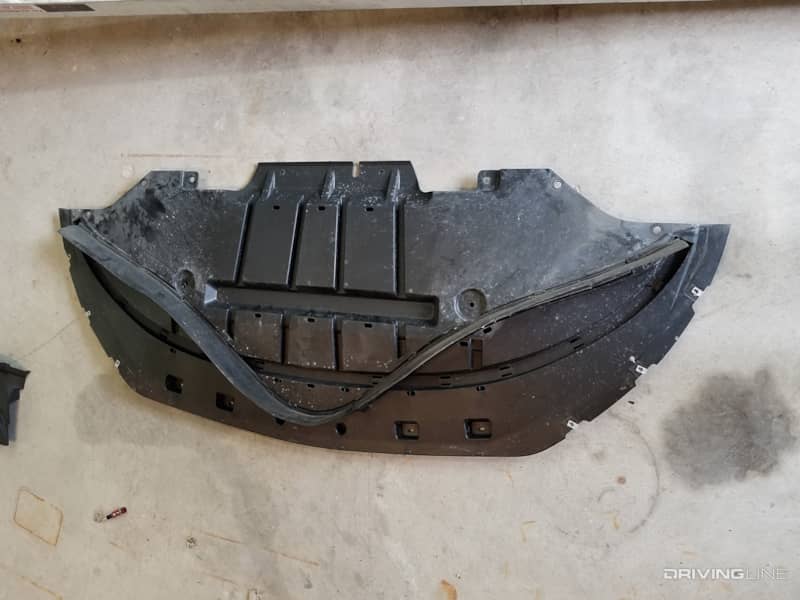
Once the initial dyno tests had been performed (both stock and tuned), the guys at Gearhead Automotive Performance began the Mishimoto intercooler install. In order to gain access to the factory intercooler, the car’s under tray was removed first. An array of 7mm bolts, pop clips and 5.5mm bolts have to be pulled before the large plastic piece can be detached.
Digging In
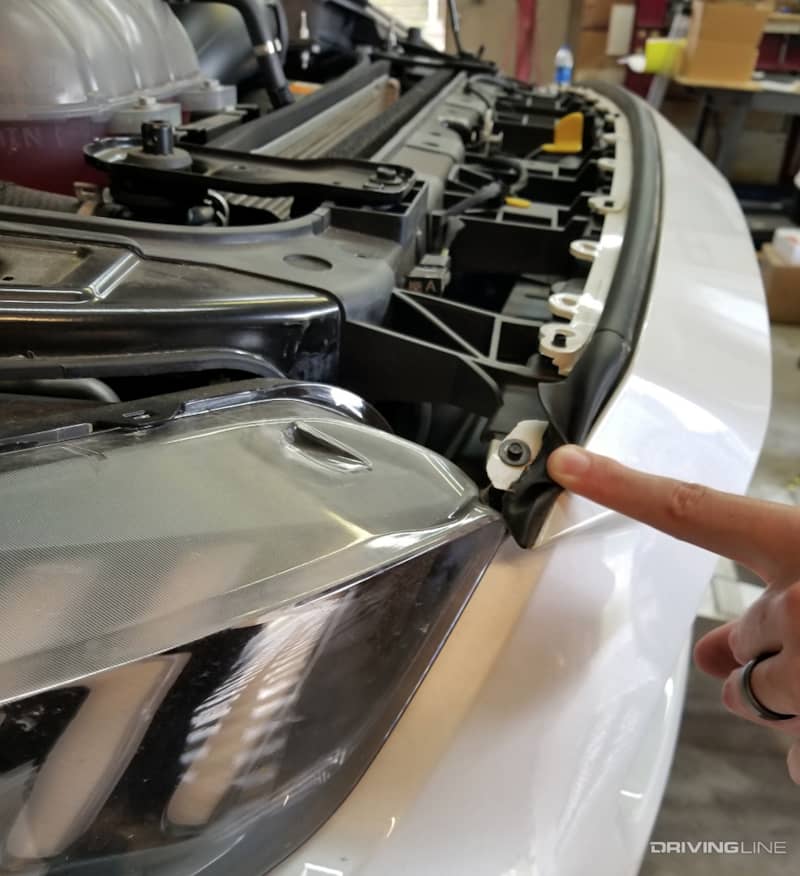
After removing the eight pop clips that hold the air diversion cover in place in the engine bay, the pop clips and 8mm screws securing the front bumper cover were extracted. Then the front fenders were removed from the inner fender wells via two 7mm bolts (one per side, behind the headlights) and the bumper cover was finally free, aside from disconnecting the headlight, fog light and turn signal wire harnesses.
Accessing The Intercooler
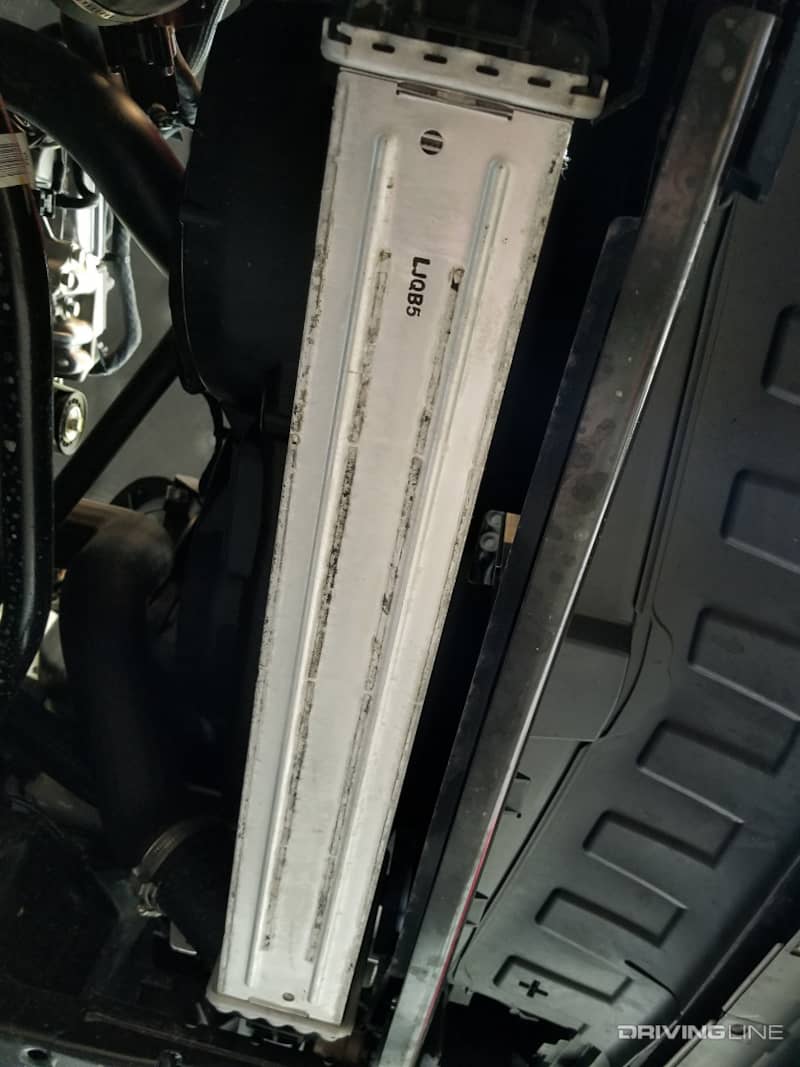
Further tasks involved in accessing the intercooler included removing the air dam, freeing the air shutter arm and disconnecting the air shutter motor. Then once the tree clips used on the ambient air temperature sensor were removed, the intercooler was finally within reach.
Factory Boost Tubes (Retained)
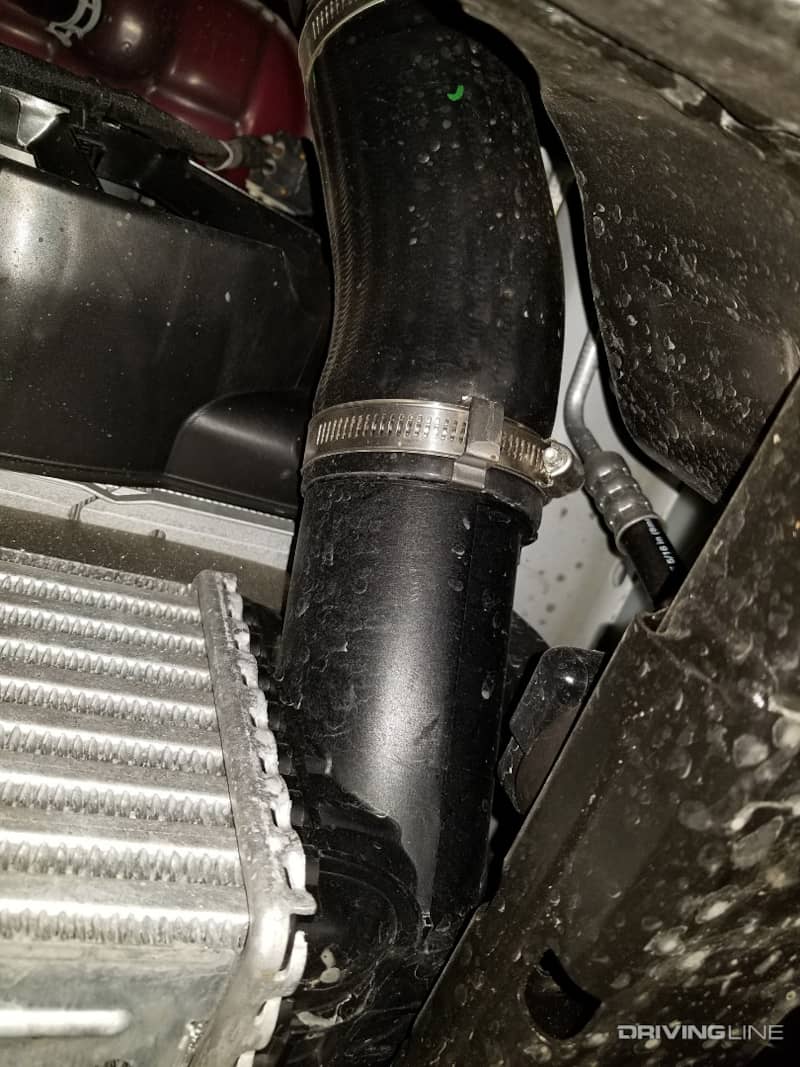
With access to the hot and cold side intercooler pipes, their respective worm gear clamps were loosened (shown above), followed by removal of the TIP sensor (note: the TIP sensor gets transferred over to the Mishimoto unit). Additionally, up top the radiator has to be moved in order to provide extra working room in the engine bay.
Stock vs. Mishimoto
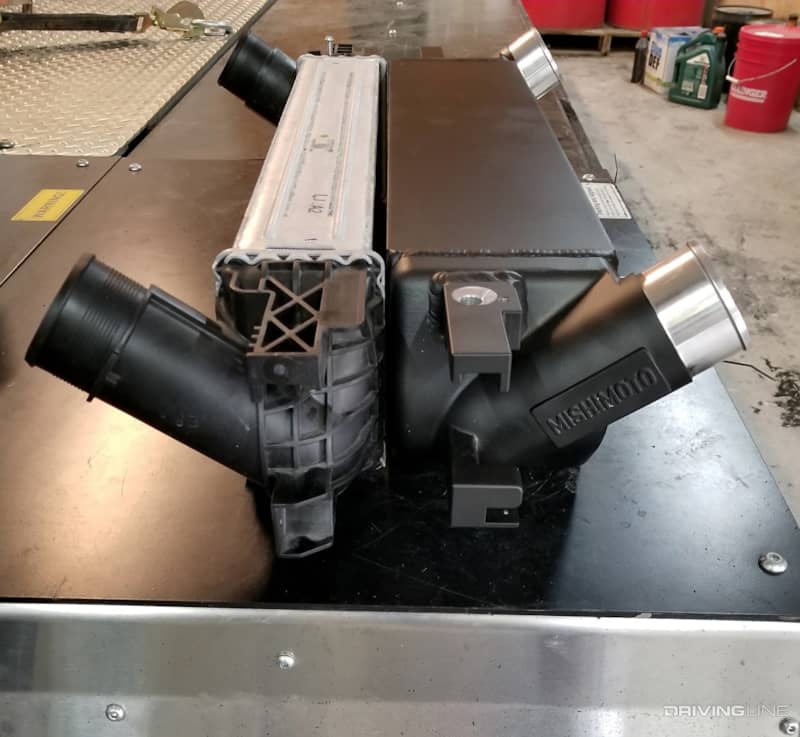
In the photo above, you can see how much thicker the Mishimoto performance intercooler’s core is over the factory unit’s. According to Mishimoto, its intercooler offers a 25-percent increase in internal core volume and also provides an impressive 165-percent increase in fin surface area.
Bolted in Place
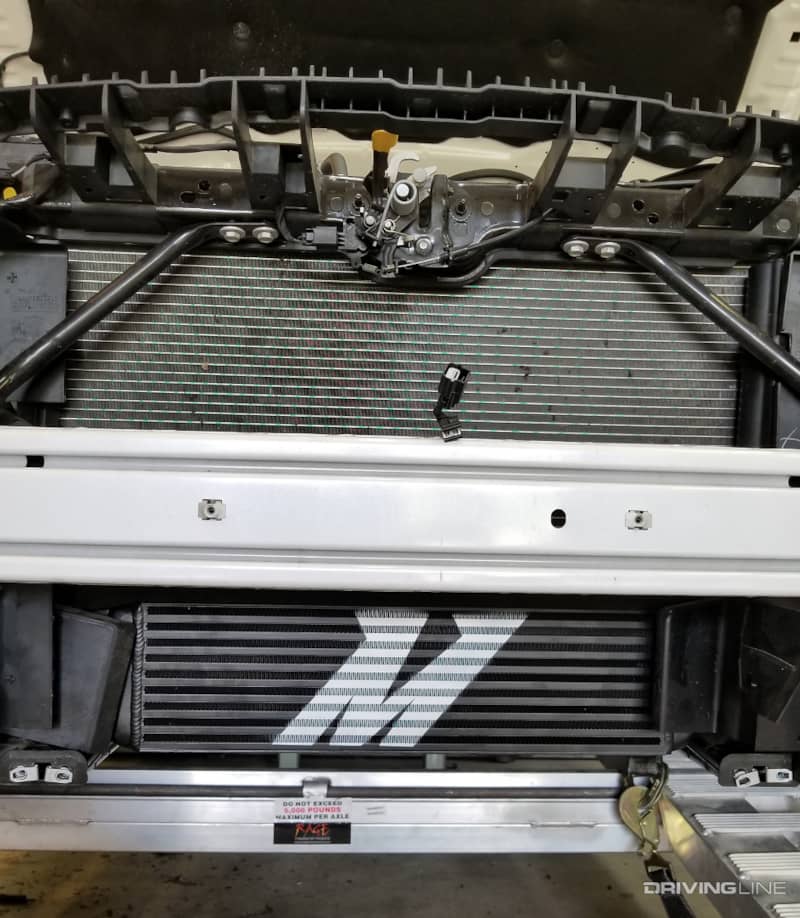
A true bolt-in product for ‘15+ EcoBoost Mustangs, the Mishimoto performance intercooler can be installed without removing the front bumper cover, although Mishimoto recommends the latter (as is shown above) as opposed to pulling the radiator and A/C condenser assembly. The Mishimoto intercooler is designed to retain the OEM grille shutters as well. We’ll note that removing the grille shutters can cause excessive condensation buildup in cars living in colder, humid climates.
Tuner, Air Intake, Downpipe + Mishimoto Intercooler
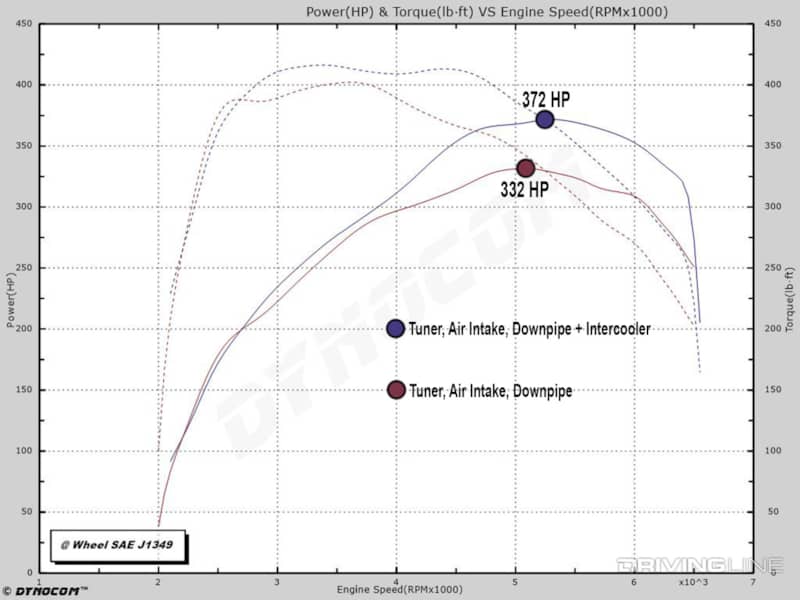
After installing the Mishimoto performance intercooler and changing nothing else (same intake, downpipe and tune), horsepower jumped to 372 at the tires (422 lb-ft of torque) thanks to vastly cooler, denser air entering the engine. The impressive 40 hp gain found with the Mishimoto unit highlighted just how inefficient the stock intercooler becomes once these cars are tuned. In many ways, the Mishimoto intercooler exceeded our expectations. For instance, Mishimoto claims customers will see a 35-degree reduction in air intake temp…We saw 65. That 37-percent decrease in intake temperature paved the way for not only another 40 hp to be made, but for it to be sustained. That means you can run more consistently at the track. On top of that, we saw less than 1 psi of boost drop from the turbo to the engine with the Mishimoto unit on the car. Prior to its installation, we observed a boost drop of 3 psi.
Peak Boost: 22-23 psi
Boost Drop: 0.7 psi
Air Intake Temp: 110 degrees
What’s Next?
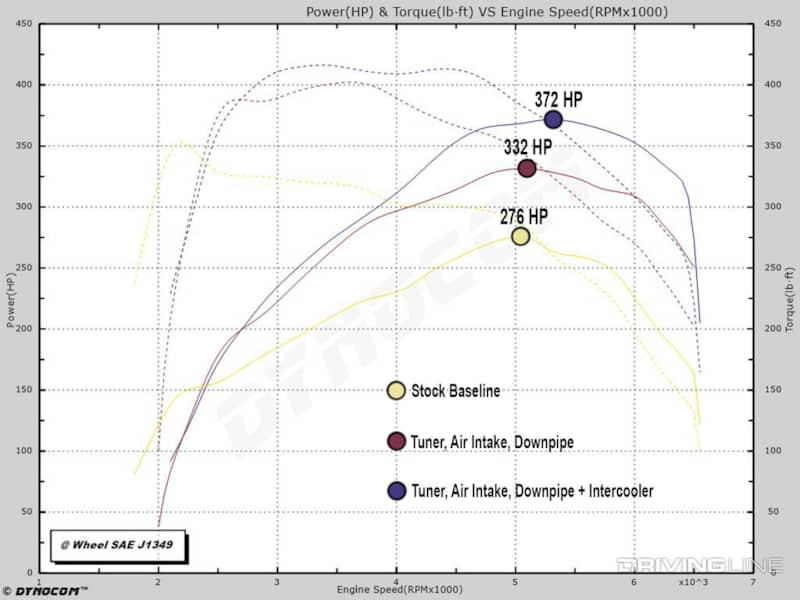
In this dyno graph, the stock, tuned and tuned + Mishimoto intercooler power figures are shown. At this point—and judging by the power curve of the 372 hp run getting flatter—the turbo seems to be out of flow. The next step in testing EcoBoost Mustang performance will entail a turbo upgrade. Stay tuned!





